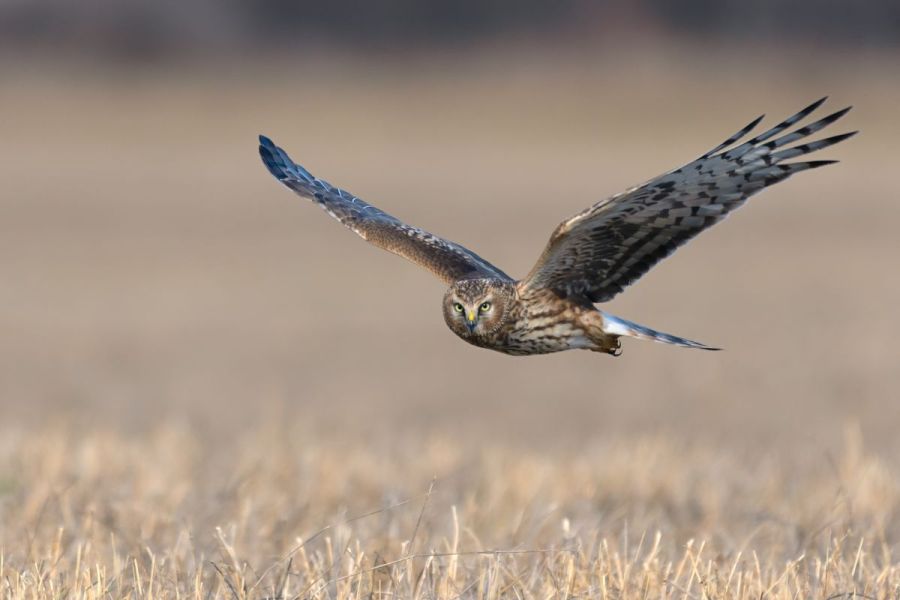When the Hinchliffe family partnered with BASF 20 years ago, sustainability was widely considered the responsibility of the few, not the many. CPM joined them to celebrate the project’s evolution and achievements during a day which culminated in the announcement of the winner of the inaugural Rawcliffe Bridge Award for Sustainability.
The legacy of this site is that it gives us an opportunity to communicate with people, to share information and to change people’s points of view.
By Lucy de la Pasture
Amid the dykes that drain the fertile warp soils at Rawcliffe Bridge in the East Riding of Yorkshire, a tiny spark of an idea turned into a flame. Twenty years on, that flame has become a beacon for sustainable intensification, providing hard, independent scientific evidence that arable farms can be productive and nurturing to the environment at the same time.
Custodians of the land at Rawcliffe are the Hinchliffe family and they threw open their doors at the end of July to celebrate two decades of working with industry partner BASF, which shows the softer side of ‘big ag’ – advocacy and environmental – that seldom makes the news.
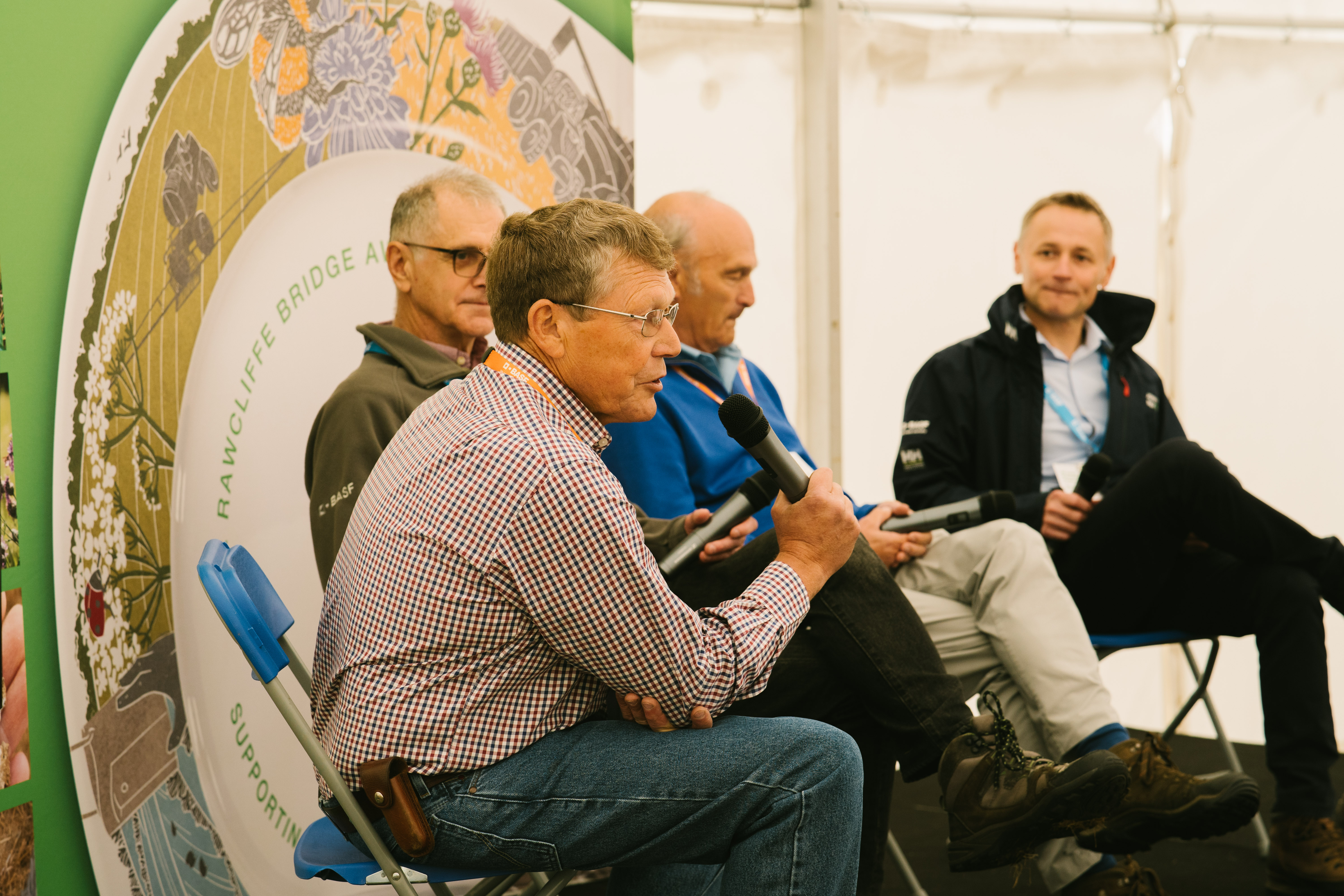
David Hinchliffe explains why the family decided to partner with BASF 20 years ago and begin to document the effect that farming was having on the biodiversity and the positive outcomes.
David Hinchliffe explains the connection with BASF began in 1996 when the farm began to host fungicide and variety trials. “When we reached the millennium, a new buzzword began to appear which was sustainability. At the same time, one of the major things being talked about in the press was the farmland bird index and it was used as a good stick to beat agriculture with.
“After a few discussions, it became apparent to us that some of the information being put out in the press about what intensive agriculture was doing to the environment wasn’t necessarily very factual or couldn’t be backed up with factual information,” he says. And the spark was lit.
And that’s where a different kind of relationship was struck up with BASF. David nods to Graham Hartwell, BASF’s then sustainability lead who has since retired, passing the torch on to Mike Green in 2017. “Graham came forward with the idea that we could do something to counter the bad press [on decreasing bird numbers] and we started by putting in wild bird food mixes,” says David.
“Our major aim is producing high yielding crops but while we’re doing that, it’s also in the forefront of our minds that we have to do that in as sustainable a way as possible. We want to do our best for biodiversity and the environment, especially as this place is our home, is where we work and a place we love.”
And that’s something David believes is often missed in the discussion surrounding any damage to the environment. “Part of this journey we’ve been on over the past 20 years has been trying to bring together information and facts that have helped make the case that we can produce food economically – both profitably and sustainably.”
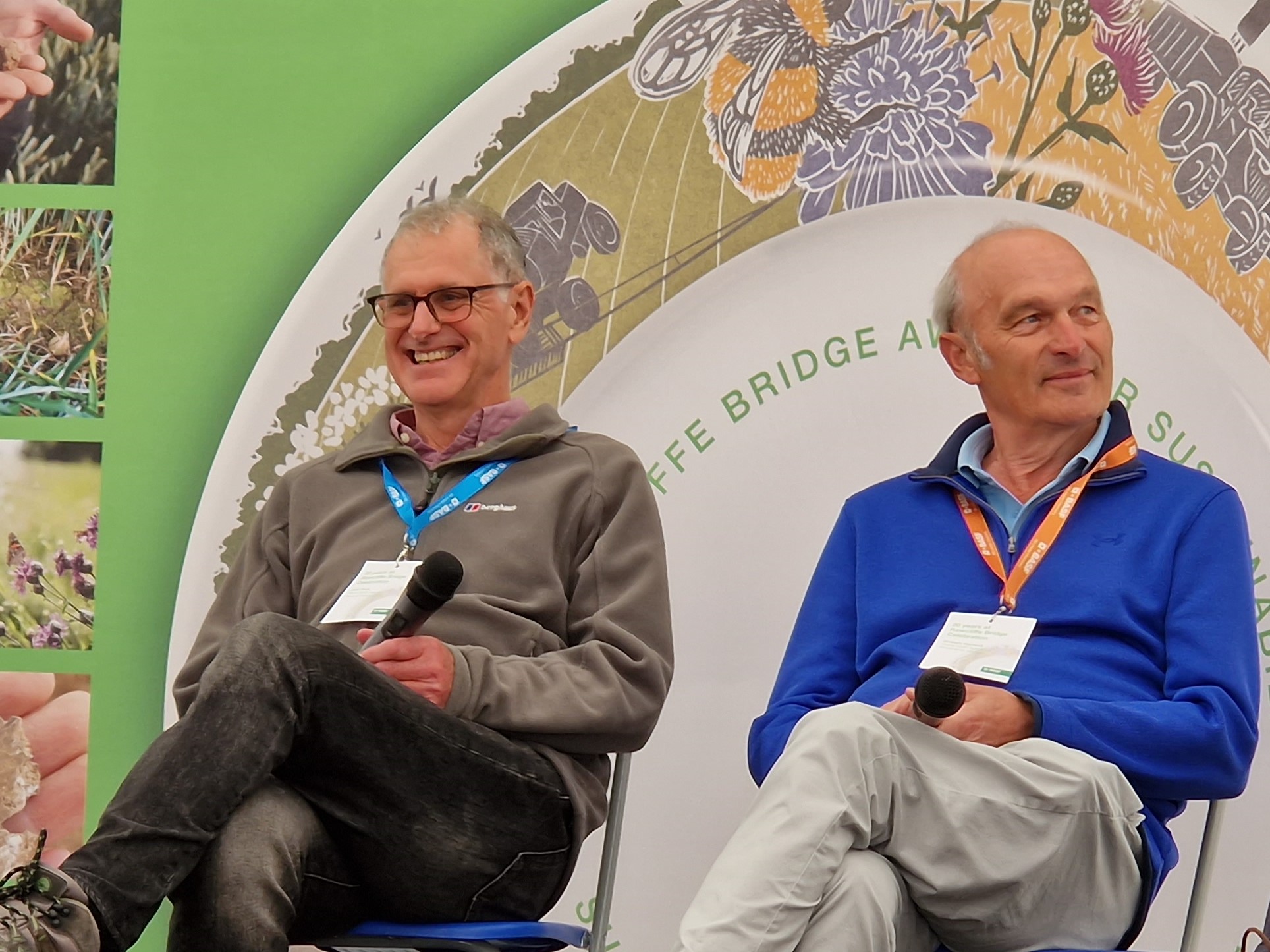
John Peck and Graham Hartwell, who were part of the BASF team who initiated the project at Rawcliffe Bridge, shared what it meant to them to be involved and what its advocacy work means to farming – now and 20 years ago.
Also re-joining the BASF team responsible for instigating the work at Rawcliffe for the day is John Peck and he recalls that the government were looking at introducing a pesticide tax in the late 1990s, but it was willing to give the farming industry an opportunity to put its own house in order. So the Voluntary Initiative was born and that was part of the impetus behind BASF’s involvement, he says.
“We considered ourselves to be a fairly significant part of the supply chain, so we thought it was time to do something to support the VI’s activities and that’s what led to our involvement at Rawcliffe Bridge.”
Picking up the story, Graham says the early focus was on farmland bird numbers and the work at Rawcliffe showed that numbers can be increased relatively quickly. “For instance, tree sparrows increased from just six pairs on the farm to 59 pairs in relatively few years. It showed that if you want more, then you can go and do more. It’s really very simple – we could use the same science we were using to grow crops to grow more biodiversity,” he says.
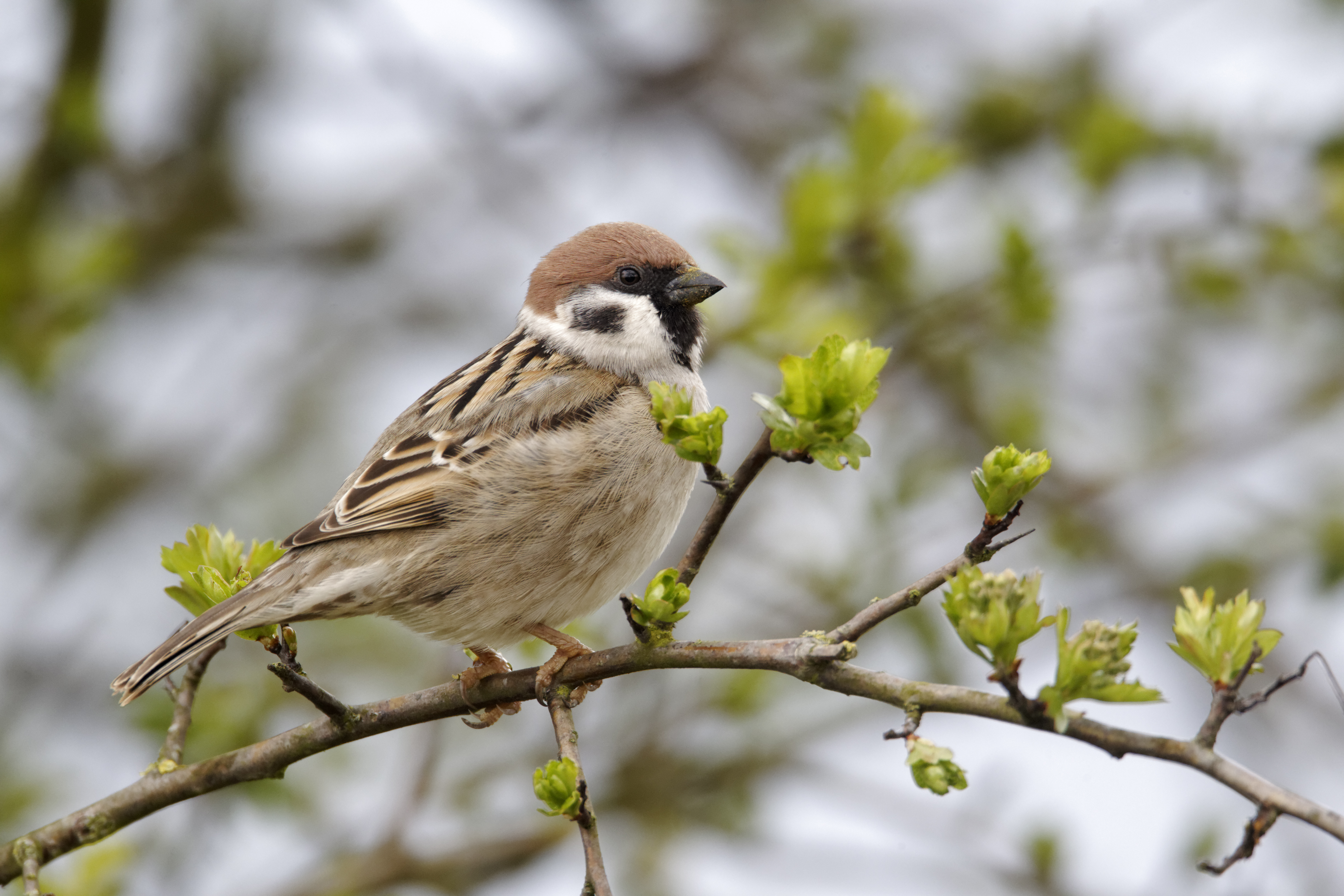
Tree sparrow numbers increased from six to 59 pairs between 2003-2010 following the introduction of ‘bed and breakfast’ nest boxes and feeding stations at Rawcliffe Bridge farm.
“And if you looked, the areas of the crop that were delivering optimum yield were in the centre of fields and the outside edges weren’t as productive. So that’s where we grew crops for the birds.”
Graham points out that the vast amount of data collected at Rawcliffe isn’t BASF data, it’s independent data that’s been collated by independent experts. “It’s data which we can argue comfortably with any organisation because of this,” he adds.
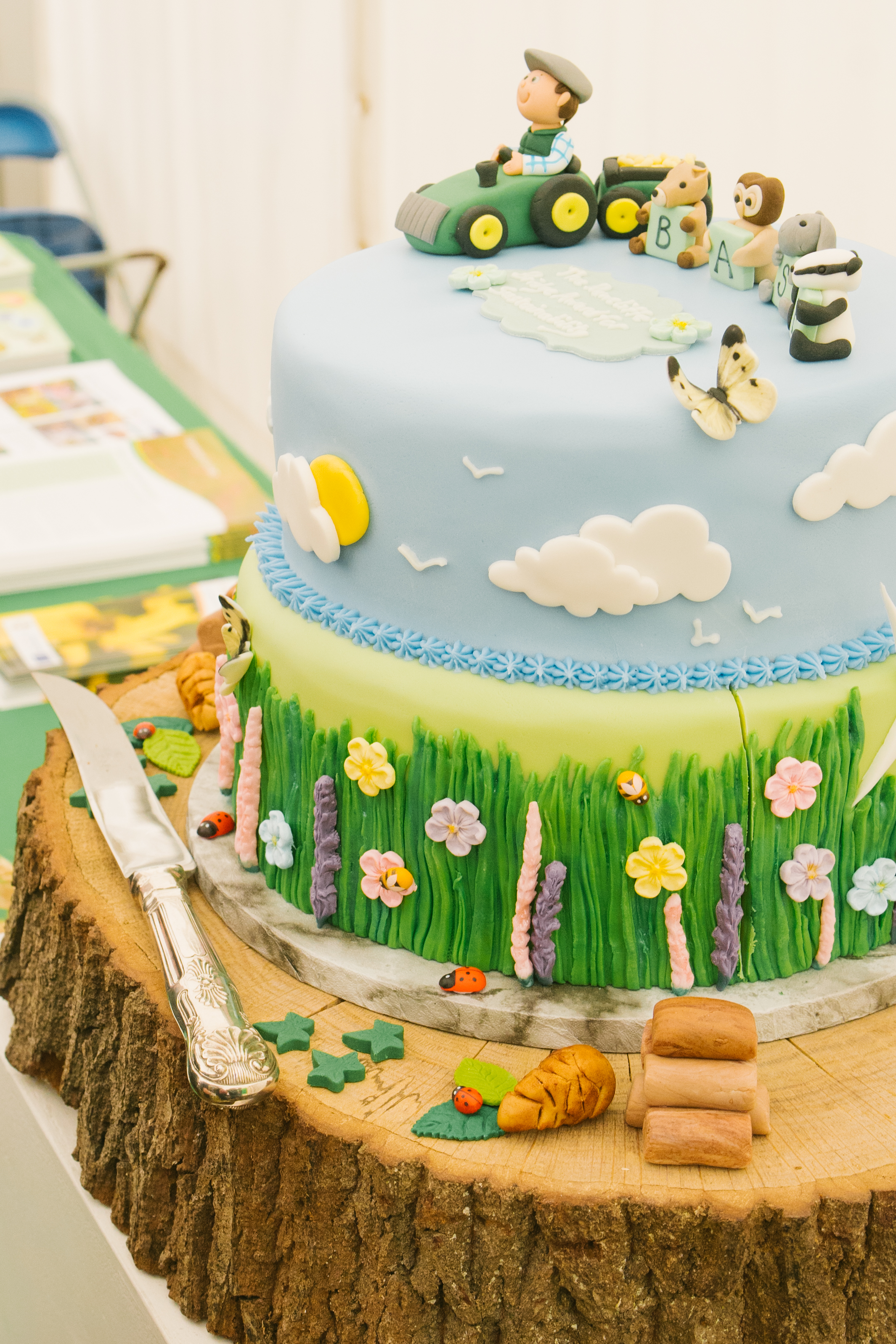
It was a family occasion at Rawcliffe Bridge, with three generations of the Hinchliffe family present and an incredible cake made by Richard’s wife, Rebecca.
He admits that when the idea of asking him to pick up the sustainability torch was first muted in the office, he wasn’t over enthused by the idea. Twenty years on he sees things very differently. “The legacy of this site is that it gives us an opportunity to communicate with people, to share information and to change people’s points of view because that’s what was necessary [20 years ago] and will continue to be necessary because people don’t understand agriculture. But they can come here and smell it, come here and touch it, come here and feel it.”
And it’s that outreach and advocacy work that has become an important part of the Rawcliffe Bridge project, adds David. “It’s all about education. And I think it’s always been a problem with our industry that when we’ve been putting our case to government, we’ve always been playing second fiddle to some of the other NGOs that have been trying to put forward an alternative case.
“And it does worry me that there’s a disconnect between the people who are actually making policy and what’s actually happening on the ground. And it’s a worry how we can actually bridge that gap in knowledge. Over the years, we’ve had a lot of people down here, a lot of them influencers, and I hope they’ve gone away having a little bit more knowledge than what they came with. We’ve tried to educate some of them as politely as possibly,” he smiles.
Some of those people David refers to, who have seen the work at Rawcliffe first hand, are from CRD, as well as many other organisations allied with farming or NGOs, but not necessarily with any first-hand experience.
Rounding up, BASF’s Rob Gladwin says: “We started with birds, but over time we’ve evolved and the work at Rawcliffe has become a much more wide-ranging discussion, not only in terms of production where we’re looking at things related to regenerative agriculture, but also the broader environmental piece.”
Build it and they will come
Marek Nowakowski of the Wildlife Farming Company has worked with environmental scientists as an agronomist and ecologist for nearly 50 years, putting him in the ideal position to bring scientists and farmers together to deliver wildlife gains on the farm.
He explains that it’s actually very simple to achieve this, yet it’s a process that’s being hindered rather than helped by government policy.
“Flowers get insects, we know we can do it, the science is there. If we put the right habitats in the right place and manage them correctly, the wildlife climbs the ladder. Policy hasn’t yet caught on to that,” he says.
Marek’s job at Rawcliffe, and its sister sustainability project being run at The Grange in Northamptonshire, is to look at the habitats present in the landscape. “Here and The Grange are very, very different. The Grange is warm, with hedgerows and a heavy soil. And this is almost the reverse, with a windmill farm on the boundary,” he says, as he gestures to the giant wind turbines, dominating the landscape a few miles away – proof that the wind plays a key role here.
“The first thing we need to understand is what lives here and why, so for the past five or six years I’ve been recording what’s around.”
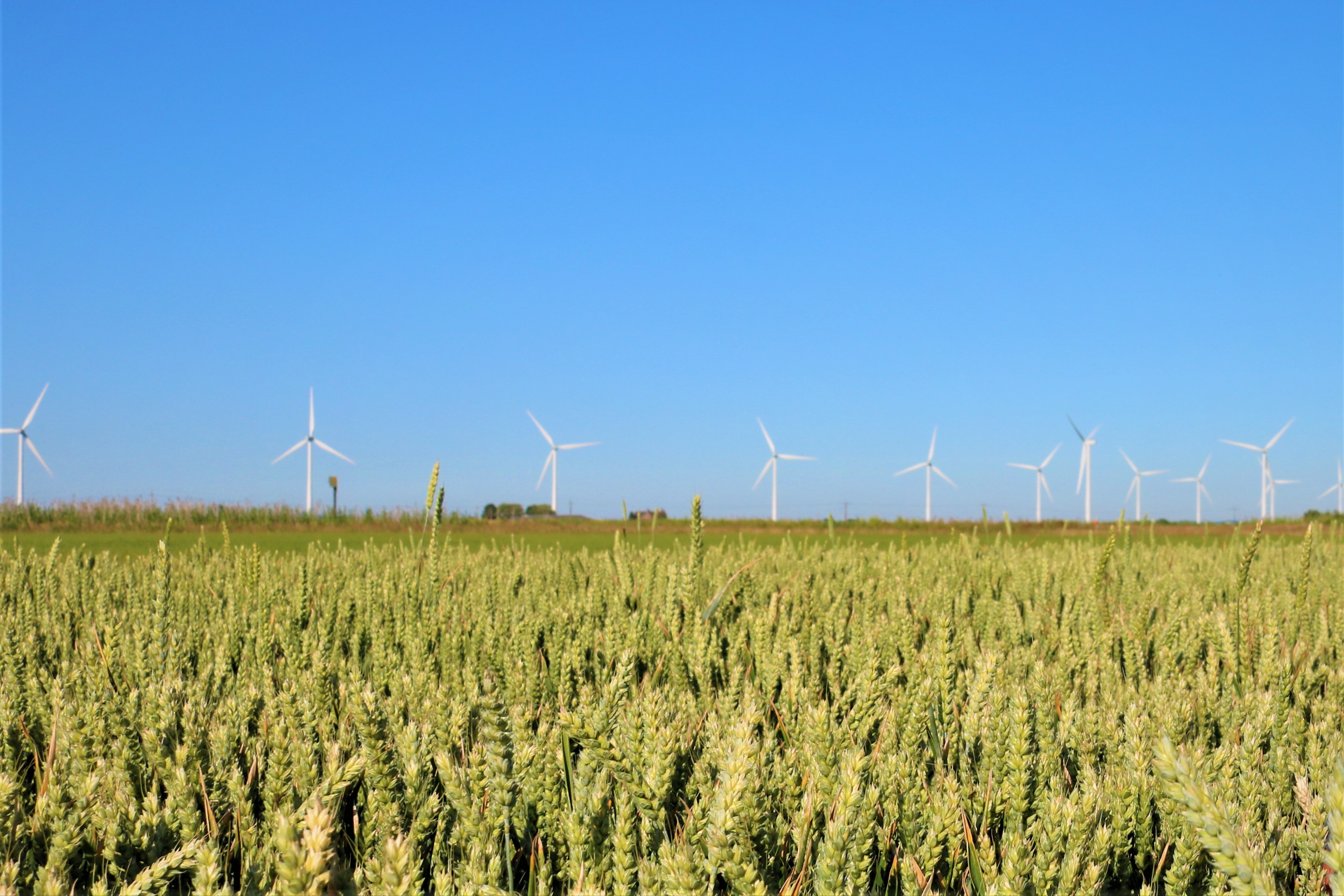
The windy, open spaces at Rawcliffe suit the species that prefer that habitat – such as the hen harrier.
From an outsider’s viewpoint, the farm could be said to be devoid of wildlife, says Marek. “No, it’s got the wildlife that lives here. We’ve got a hen harrier here, if that was found down at The Grange then they’d shut the place down and turn it into an SSSI because the hen harrier doesn’t live in the habitat provided by The Grange. So first of all, understand the habitat you’re in.”
Similarly, Marek explains that small solitary and mining bees won’t be found in any numbers at the Rawcliffe site. “The small bees can’t fly here, it’s too windy. So somebody could come to the farm and say, it’s all poisonous there on the farm because there are no small bees, but it’s because it’s an exposed site and they can’t fly. But this place has more honeybees and bigger bumblebees than The Grange because they’re stronger fliers,” he explains.
“You should have a range of habitats within the landscape and tick off the ones you’ve got. The skill now is paying farmers appropriately to put back the habitats that are missing. And for 50 years we’ve actually done this, and it works. If you put the habitats back, treat them as a crop, manage them to a high level, you get a result. If birds starve to death, try feeding them. We’ve lost 98% of our flowers, so treat them as crops.”
The situation that we’re in now, and it’s certainly something that we’re going to work more closely with Mike and his team, is to put the right habitat for the result we’re looking for. For example, if I’m in an apple orchard with flowers in July, that’s of no use to pollinators because pollination takes place much earlier in the year.”
He suggests farmers adopt this mindset when planning wildflower seed mixes, and ask the questions: “What do I want to do? What do I want to achieve? Nobody buys a bag of wheat, they choose the variety and they know what they want to do with it. And we ought to do the same with the wildflower mixes.
“And we challenged Defra on this, and they ran away from the challenge. If every farmer gave over 5% of his land, put the right habitats in and was paid correctly, and was trained correctly, half the problems we have now would disappear. Why the hell aren’t we doing that? I really don’t know.
BASF has led by example when it comes to building habitats for wildlife, says Marek. “Mistakes have been made which we’ve learned from, but the big problem that we, as an industry, still have is that we’re good at talking to each other. However, we’re not very good at going outside and that’s left people with presenters from Countryfile and Spring Watch [to inform their view of the farming], who don’t actually farm.”
When asked whether it might be better for farmers to step outside of the constraints of ELMs, so they can decide what they actually want to achieve and then target their measures, Marek says he’s advising them to do exactly that.
“All the farmers that I’m working with are going nowhere near ELMs because we don’t know what it actually is. They’re all going into Countryside Stewardship schemes because we do know what it is. We know the rules are fine during that five-year period, and if that’s a mistake then we can jump to the new one [SFI] with no penalty. It’s a no brainer, you don’t enter a race when you don’t even know how far you’re going run or in what direction.”
Outcomes at Rawcliffe Bridge
- 110 bird species, above averagefor a lowland farm and including 64 species on the list for conservation concern
- 25 skylark territories, which is nearly twice the UK average lowland density
- Tree sparrow numbers increased from six to 59 pairs between 2003-2010 following the introduction of ‘bed and breakfast’ nest boxes and feeding stations
- Corn bunting numbers are three timesthe UK lowland average
- Grey partridge numbers are six timesthe UK lowland average
- Meadow pipit territories around the field boundaries are over 2.5 timesthe UK lowland average
- Yellow wagtail territories are 47 timesthe UK lowland average
- Successful breeding between 2004-2010 for kestrels, tawny owls and little owls
- 154 plant species on field boundaries
- 165 species of moths, 22 species of butterflies, eight species of dragonflies and two species of bats identified to date
- 56 species of water plants surveyed, including five rare species
- Good water quality evidenced by common stonewort, dragonflies, damselflies and sticklebacks
Warp soils at Rawcliffe Bridge
The soils on the Hinchliffe’s farm are a Grade I and II silty clay loam, explains Richard Hinchliffe. The flat land is about two metres above sea level and the soil is very fine due to its heritage, which has produced a soil type that’s very dark and fertile.
Soil scientist Professor Jenni Dungait is visibly excited by these ‘warp’ soils on the farm and explains how they were formed on land that was at one time below sea level.
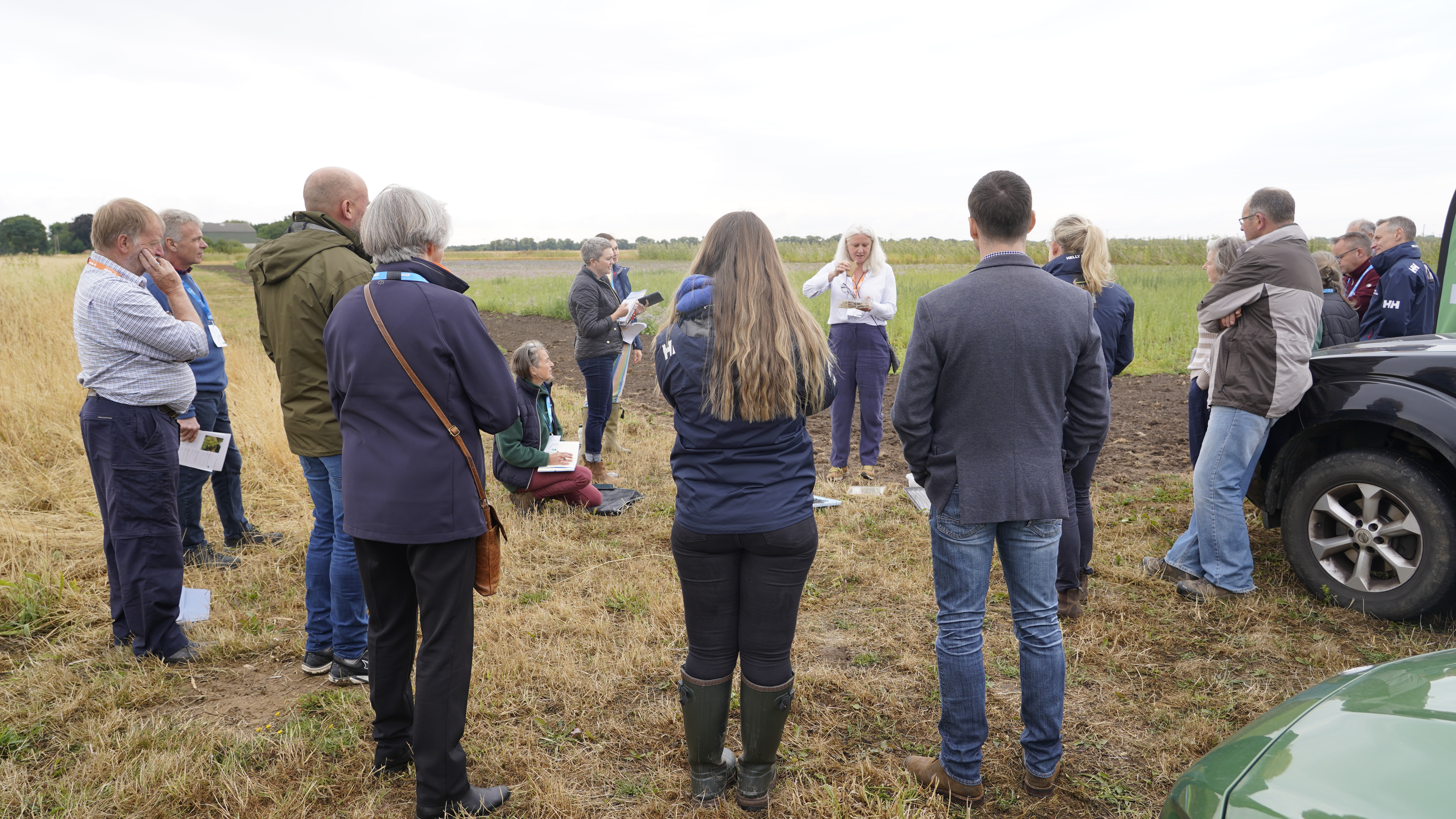
Soil scientist Professor Jenni Dungait is visibly excited by these ‘warp’ soils on the farm and explains how they were formed on land that was at one time below sea level.
Rubbing the very fine dark soil between her fingertips, Jenny explains: “This has come from the river Ouse rising, being allowed to flood the land, cover the soil, and then the water drains off leaving a nutrient rich silty layer, which is absolutely fantastic for growing crops.”
But it’s not something that happened overnight. “The salt carried by the river dropped out and gradually the layers of sediment built up over 30-40 years, until the water is drained off. And then, as I understand it, farmers put in a grass crop to try and rebuild structure with the roots, to hold the soil particles together and put back some organic matter. So it’s a very long-term process.
“The depth of silt depended on how much money the farmers had as to how many years they could afford to have it out of production. So you’ve got some fields with six foot (two metres) or more of warp soil, and others that only have a small amount.”
Sustainability in practice recognised
Forming the backdrop to the celebrations at Rawcliffe Bridge was a beautifully hand-painted porcelain plate, featuring the flora and fauna that’s fundamental to a sustainable food system – a prize befitting a 20th (or China) anniversary and the inaugural Rawcliffe Bridge Award for Sustainability.
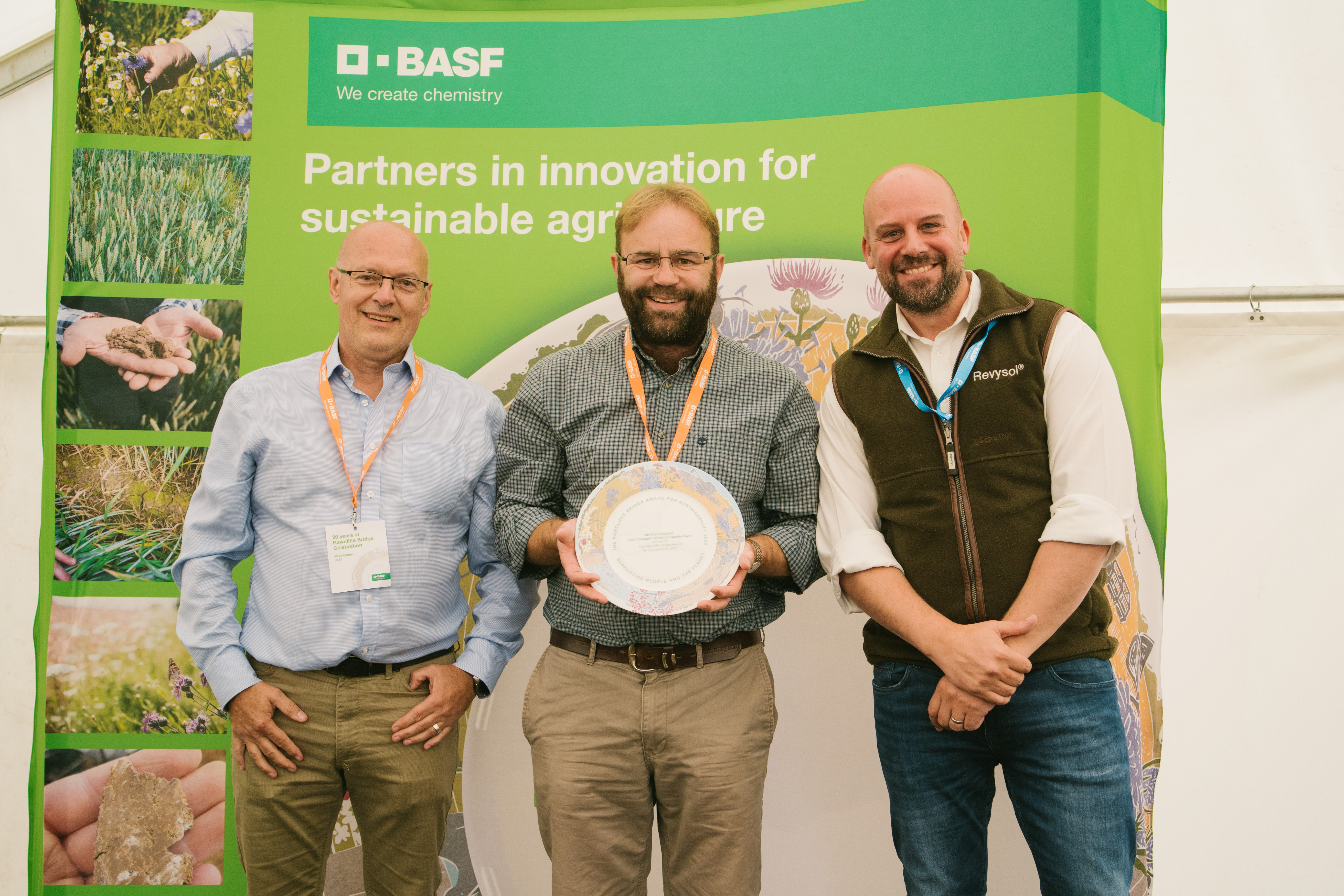
An emotional Colin Chappell, pictured with BASF’s Mike Green (left) and Neil Kaye, after receiving the inaugural Rawcliffe Bridge Award for Sustainability.
Videos of the two farmer finalists gave an insight into not just their farming systems but what drives them to farm with a lighter footprint on the planet. Both clearly have a huge passion for growing biodiversity, as well as profitable crops, and communicating their work to a wider audience.
According to BASF, the award is aimed at celebrating those farmers who manage to strike a balance between supporting ‘people, profit, and the planet’. The standard of entrants was high, and Mike Green says the judges had a difficult job choosing between the two finalists. After an anxious wait, Colin Chappell of Gander Farm in North Lincolnshire was announced as winner, with Guy Prudom of Northfields Farm in North Yorkshire awarded runner-up.
On winning the award, a clearly emotional Colin says: “I’m unusually lost for words. I know some of the people who applied for this award, and to have pipped them all is just incredulous. It was an honour to have been in the final two with Guy, and as soon as harvest is over, I want to go and see his farm and see what I can learn from him.”
Commenting on the future of sustainability in farming, he adds: “We need to have a conversation about sustainably producing food, while also caring for the environment, the water and the people around us – that’s what it’s all about. That is true sustainability.”
Colin runs an arable unit on the banks of the river Ancholme and the judges were impressed with his engagement across the board – with carbon and soil monitoring, his implementation of multiple wildlife schemes, his approach to reducing nitrogen, but above all, his dedication to community.
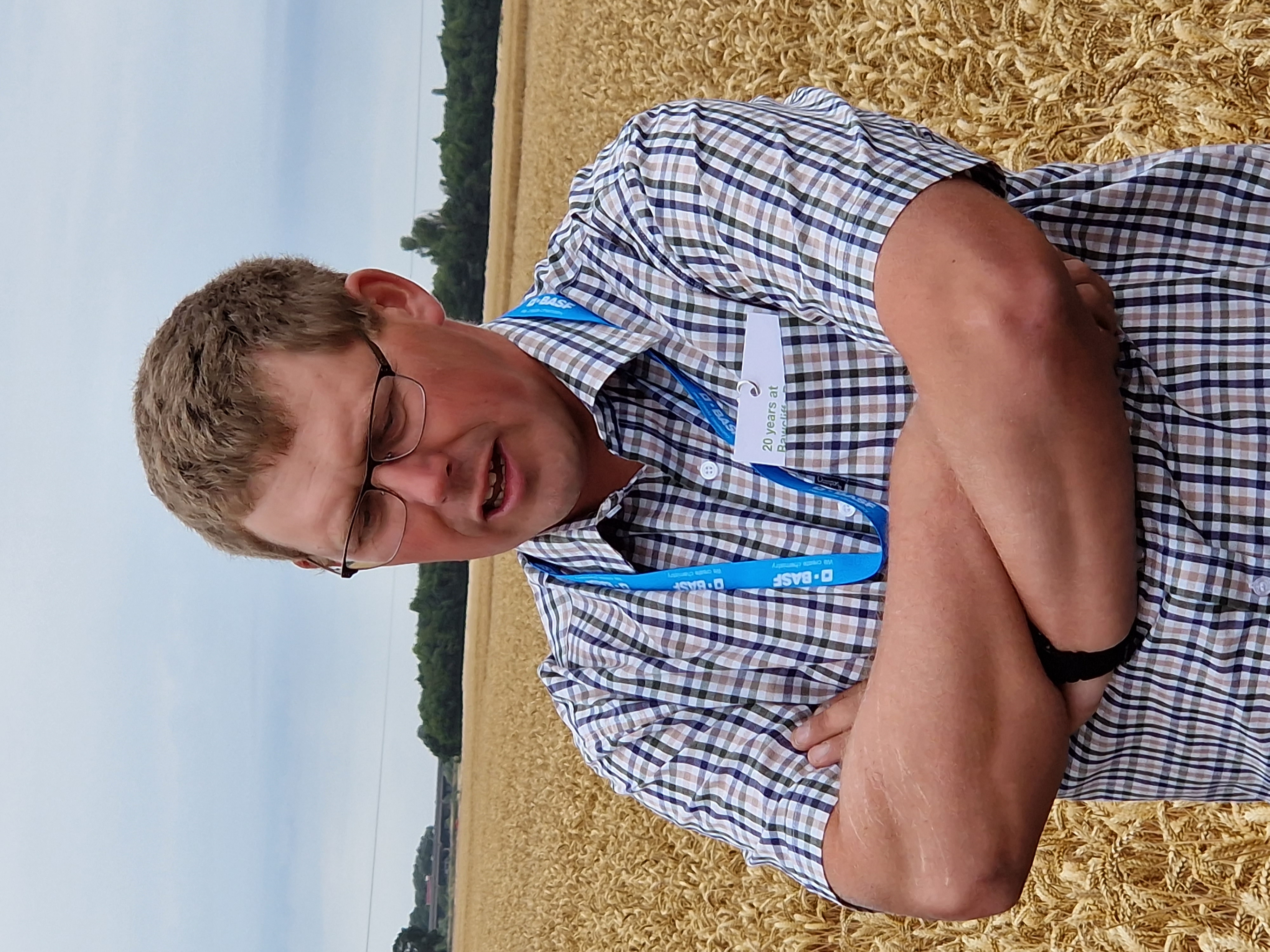
Richard Hinchliffe explains that he’s noticed the climate changing so he’s trying to build resilience, something no-till is helping with.
The award was supported and judged by representatives from BASF, Farm 491, the Institute of Agriculture Management and Richard Hinchliffe.
“The thing that really impressed me about Colin’s setup is what he did with some more economically deprived children from the local area, bringing them on farm and engaging them with agriculture and where their food comes from, and you could really see the passion he had for this. We had two fantastic finalists but a really special winner,” says Richard.
Mike Green explains why it was important to introduce this new award and the legacy BASF hope it will build. “We had the 20 years celebration coming up at Rawcliffe Bridge, and we wanted to find a way of recording the value that people put on sustainability in their businesses and to find a way of celebrating them for the work they do.
“There are a lot of people who claim to be sustainable who are incredibly technically competent and are supporting biodiversity on-farm, but maybe weren’t interacting with the social side.”
Mike firmly believes that both finalists’ dedication to community is a societal good that can often be overlooked in conversations around sustainability. “We wanted to have a competition which recognises that there are three legs to the stool of sustainability, economic, environment and societal, and you have to be supporting all three of them to keep it steady.”
This article was taken from the latest issue of CPM. For more articles like this, subscribe here.

